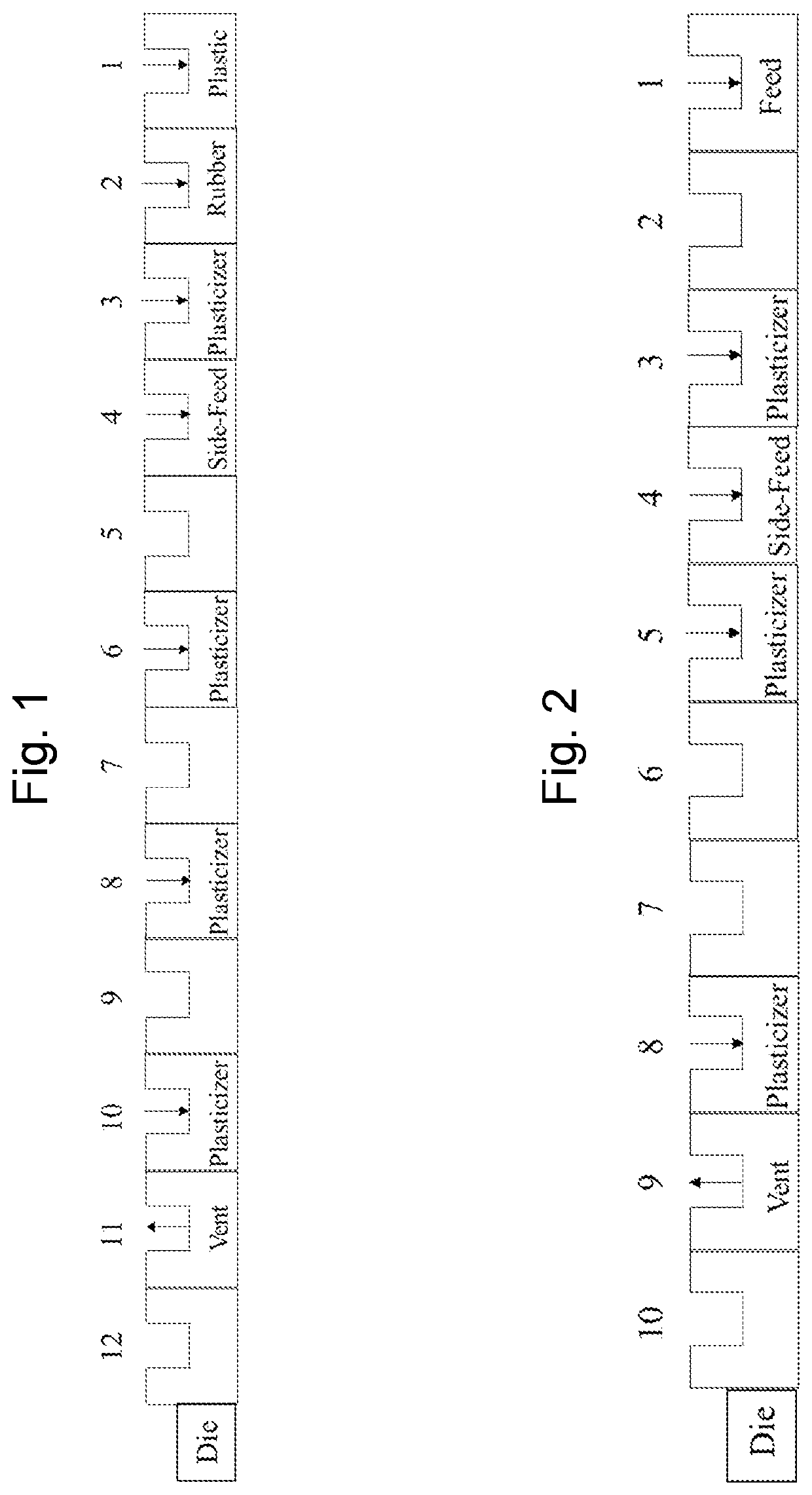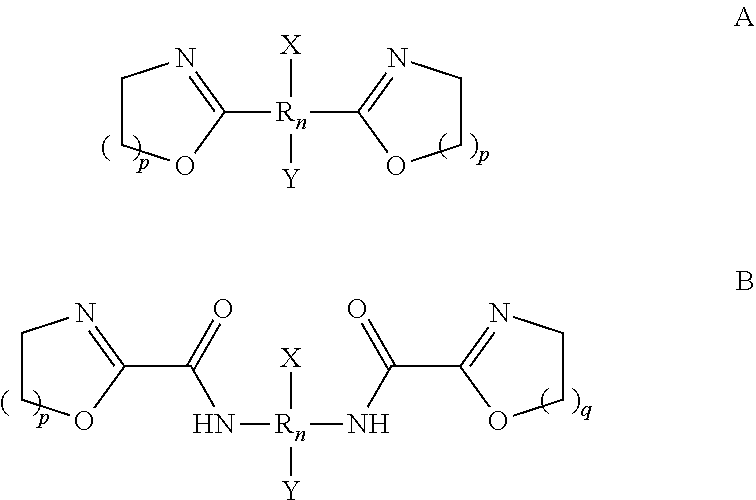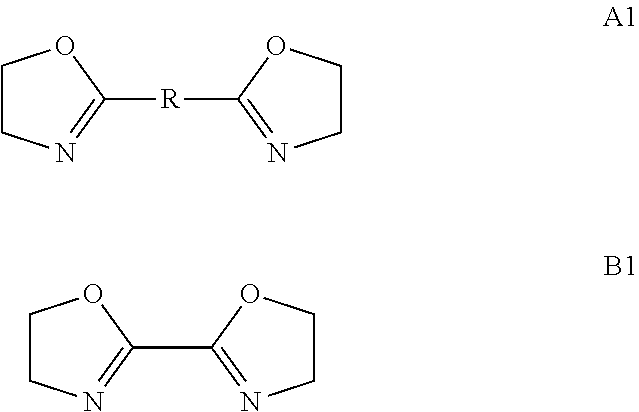High Temperature, Oil-Resistant Thermoplastic Vulcanizates
a thermoplastic vulcanizate, high temperature technology, applied in the field of compositions and methods for the preparation of thermoplastic vulcanizates, can solve the problems of poor processability of the product, the degradation of the tpv melt at the high temperature, and the inability to meet the flow requirements of the product even at 275° c., so as to avoid the product processability problems, enhance the physical properties of the tpv, and reduce the mw
- Summary
- Abstract
- Description
- Claims
- Application Information
AI Technical Summary
Benefits of technology
Problems solved by technology
Method used
Image
Examples
example 1
[0210]Plasticized TPV formulations compounded from Valox 315 (Poly(butylene terephthalate)) and ethylene-acrylate rubber at a 45 / 55 plastic to rubber weight ratio, with 1,3-PBO as curing agent, are shown below in Table 1. The properties of these formulations and the processing conditions used to produce them are also presented in Table 1.
TABLE 1Formulations in Weight %, Properties and Processing Conditions forValox 315 / Vamac Ultra HT TPVs where Powders are Fed atDifferent Locations1-SF2-SF1-FT2-FTFormulation no.Vamac Ultra HT52.1448.4552.1448.45Valox 31542.6539.6542.6539.65PBO5.214.855.214.85PN-2500.007.050.007.05Total100.00100.00100.00100.00PropertiesInjection Molded:3011.002286.003052.002227.00Tensile Strength @RT (psi)Injection Molded:130.00129.00103.00106.00Elongation @ RT (%)Injection Molded:930.00681.00884.00685.00Tensile Strength @150° C. (psi)Injection Molded:100.0094.0087.0092.00Elongation @150° C. (%)Injection Molded:62871.004411760074.0044652.00Flexural Modulus @RT (psi)I...
example 2
[0211]Plasticized TPV formulations compounded from Ultramid B33 01 (Nylon 6) and ethylene-acrylate rubber at a 45 / 55 plastic to rubber weight ratio, with 1,3-PBO as curing agent, are shown below in Table 2. The properties of these formulations and the processing conditions used to produce them are also presented in Table 2.
TABLE 2Formulation in Weight %, Properties and Processing Conditionsfor Ultramid B33 01 / Vamac Ultra HT TPVs where Powdersare Fed at Different Locations.3-SF4-SF3-FT4-FTFormulation No.Vamac Ultra HT52.1445.2752.1445.27Ultramid B33 0142.6537.0442.6537.04PBO5.214.535.214.53BBSA0.0013.160.0013.16Total100.00100.00100.00100.00PropertiesInjection Molded:4421.003261.004652.003316.00Tensile Strength @RT (psi)Injection Molded:122.00172.00155.00186.00Elongation @ RT (%)Injection Molded:1769.001224.001778.001232.00Tensile Strength @150° C. (psi)Injection Molded:157.00164.00172.00174.00Elongation @150° C. (%)Injection Molded:56452.0017889.0056507.0017083.00Flexural Modulus @RT...
example 3
[0213]Plasticized TPV formulations using 1,3-PBO (curative) compounded using Valox 315 (Poly(butylene terephthalate)) and different AEM grades at the same rubber / plastic ratio (60 / 40) without any processing aid, are shown below in Table 3. The TPV formulations are prepared in the laboratory batch mixer. The formulations and physical properties of the resulting PBT / AEM TPVs are shown below in Table 3.
TABLE 3Formulations in Weight % for PBT / AEM TPVs Made on Laboratory Mixer Without Using Any Processing Aid.Thermoplastic Vulcanizate (TPV) Formulation567891011Formulation No.Valox 31535.5635.5635.5635.5635.5635.5635.56Vamac Ultra IP53.33——————Vamac HVG—53.33—————Vamac GXF——53.33————Vamac GLS———53.33———Vamac G————53.33——Vamac VMX 3123—————53.33—Vamac Ultra HT——————53.33PBO 2.67 2.67 2.67 2.67 2.67 2.67 2.67Antioxidant 405 1.33 1.33 1.33 1.33 1.33 1.33 1.33TegMeR 810 7.11 7.11 7.11 7.11 7.11 7.11 7.11PropertyInjection Molded:90.0789.1690.7586.6088.1492.8188.72Compression Set @ 150° C., 70 ...
PUM
| Property | Measurement | Unit |
|---|---|---|
| Temperature | aaaaa | aaaaa |
| Temperature | aaaaa | aaaaa |
| Fraction | aaaaa | aaaaa |
Abstract
Description
Claims
Application Information
 Login to View More
Login to View More - R&D
- Intellectual Property
- Life Sciences
- Materials
- Tech Scout
- Unparalleled Data Quality
- Higher Quality Content
- 60% Fewer Hallucinations
Browse by: Latest US Patents, China's latest patents, Technical Efficacy Thesaurus, Application Domain, Technology Topic, Popular Technical Reports.
© 2025 PatSnap. All rights reserved.Legal|Privacy policy|Modern Slavery Act Transparency Statement|Sitemap|About US| Contact US: help@patsnap.com



